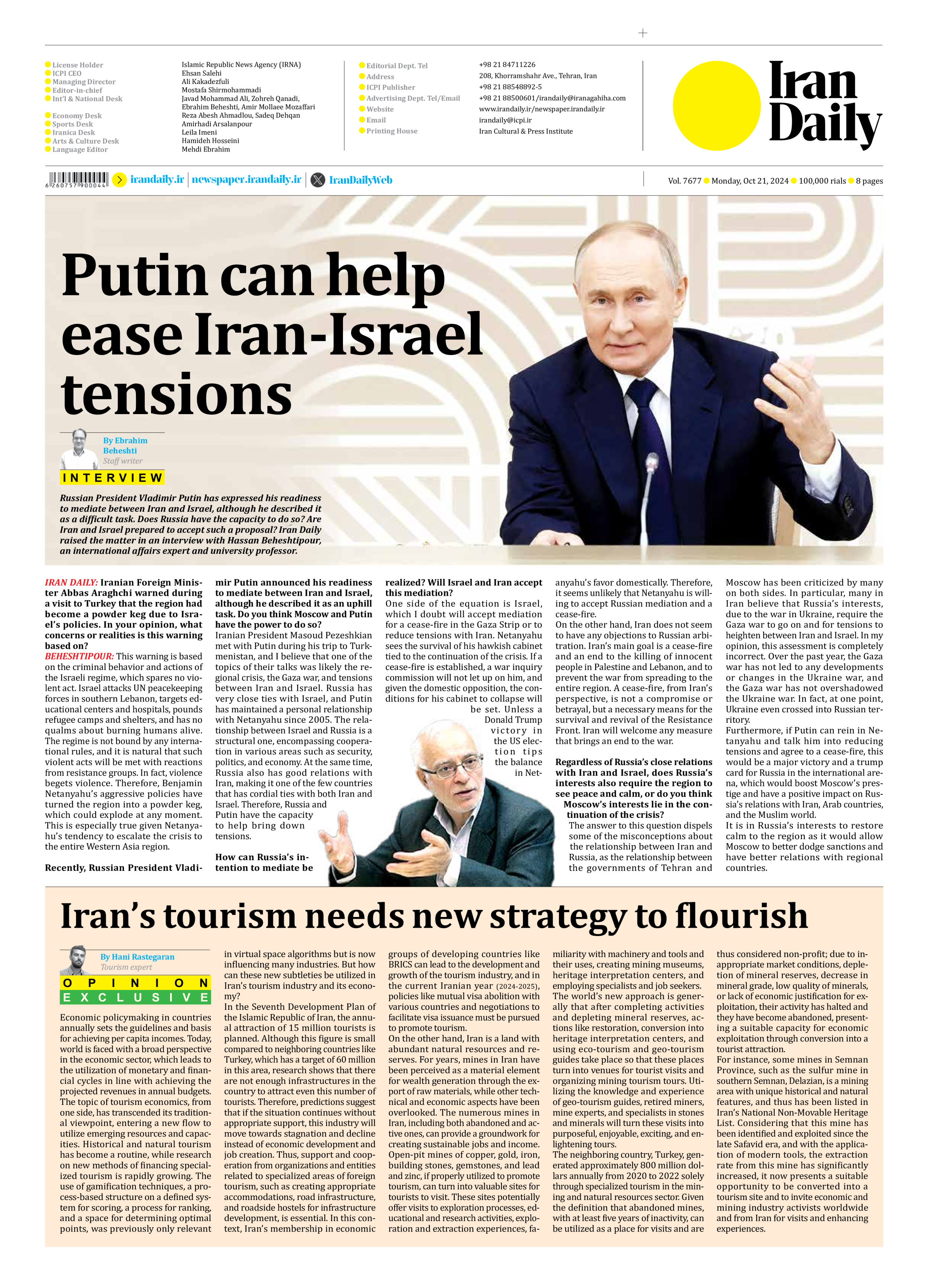
Iran’s tourism needs new strategy to flourish
By Hani Rastegaran
Tourism expert
Economic policymaking in countries annually sets the guidelines and basis for achieving per capita incomes. Today, world is faced with a broad perspective in the economic sector, which leads to the utilization of monetary and financial cycles in line with achieving the projected revenues in annual budgets. The topic of tourism economics, from one side, has transcended its traditional viewpoint, entering a new flow to utilize emerging resources and capacities. Historical and natural tourism has become a routine, while research on new methods of financing specialized tourism is rapidly growing. The use of gamification techniques, a process-based structure on a defined system for scoring, a process for ranking, and a space for determining optimal points, was previously only relevant in virtual space algorithms but is now influencing many industries. But how can these new subtleties be utilized in Iran’s tourism industry and its economy?
In the Seventh Development Plan of the Islamic Republic of Iran, the annual attraction of 15 million tourists is planned. Although this figure is small compared to neighboring countries like Turkey, which has a target of 60 million in this area, research shows that there are not enough infrastructures in the country to attract even this number of tourists. Therefore, predictions suggest that if the situation continues without appropriate support, this industry will move towards stagnation and decline instead of economic development and job creation. Thus, support and cooperation from organizations and entities related to specialized areas of foreign tourism, such as creating appropriate accommodations, road infrastructure, and roadside hostels for infrastructure development, is essential. In this context, Iran’s membership in economic groups of developing countries like BRICS can lead to the development and growth of the tourism industry, and in the current Iranian year (2024-2025), policies like mutual visa abolition with various countries and negotiations to facilitate visa issuance must be pursued to promote tourism.
On the other hand, Iran is a land with abundant natural resources and reserves. For years, mines in Iran have been perceived as a material element for wealth generation through the export of raw materials, while other technical and economic aspects have been overlooked. The numerous mines in Iran, including both abandoned and active ones, can provide a groundwork for creating sustainable jobs and income. Open-pit mines of copper, gold, iron, building stones, gemstones, and lead and zinc, if properly utilized to promote tourism, can turn into valuable sites for tourists to visit. These sites potentially offer visits to exploration processes, educational and research activities, exploration and extraction experiences, familiarity with machinery and tools and their uses, creating mining museums, heritage interpretation centers, and employing specialists and job seekers.
The world’s new approach is generally that after completing activities and depleting mineral reserves, actions like restoration, conversion into heritage interpretation centers, and using eco-tourism and geo-tourism guides take place so that these places turn into venues for tourist visits and organizing mining tourism tours. Utilizing the knowledge and experience of geo-tourism guides, retired miners, mine experts, and specialists in stones and minerals will turn these visits into purposeful, enjoyable, exciting, and enlightening tours.
The neighboring country, Turkey, generated approximately 800 million dollars annually from 2020 to 2022 solely through specialized tourism in the mining and natural resources sector. Given the definition that abandoned mines, with at least five years of inactivity, can be utilized as a place for visits and are thus considered non-profit; due to inappropriate market conditions, depletion of mineral reserves, decrease in mineral grade, low quality of minerals, or lack of economic justification for exploitation, their activity has halted and they have become abandoned, presenting a suitable capacity for economic exploitation through conversion into a tourist attraction.
For instance, some mines in Semnan Province, such as the sulfur mine in southern Semnan, Delazian, is a mining area with unique historical and natural features, and thus has been listed in Iran’s National Non-Movable Heritage List. Considering that this mine has been identified and exploited since the late Safavid era, and with the application of modern tools, the extraction rate from this mine has significantly increased, it now presents a suitable opportunity to be converted into a tourism site and to invite economic and mining industry activists worldwide and from Iran for visits and enhancing experiences.







